

Articles
How To Store Fresh Broccoli
Modified: February 26, 2024
Learn how to store fresh broccoli properly to keep it crisp and nutritious for longer. Get expert tips and tricks in this informative article.
(Many of the links in this article redirect to a specific reviewed product. Your purchase of these products through affiliate links helps to generate commission for Storables.com, at no extra cost. Learn more)
Introduction
Welcome to the world of fresh broccoli! Whether you harvested it from your own garden, received a bunch from a friend, or picked up a vibrant bunch from the local grocery store, you want to ensure that your broccoli stays fresh and delicious for as long as possible. Properly storing fresh broccoli is essential to maintain its flavor, texture, and nutritional value. In this article, we will guide you through the steps to store fresh broccoli successfully.
Broccoli, a member of the cruciferous vegetable family, is known for its numerous health benefits. Packed with vitamins, minerals, and fiber, it is a versatile and nutrient-rich addition to any diet. However, to fully enjoy its goodness, it is important to handle and store broccoli appropriately.
Improper storage can accelerate spoilage, leading to a loss of crunchiness, discoloration, and a decrease in nutritional value. Thankfully, with just a few simple steps, you can extend the shelf life of your fresh broccoli and keep it looking and tasting its best for as long as possible.
In the following sections, we will cover the importance of proper storage, the steps to prepare your broccoli for storage, and the various methods you can choose from to store fresh broccoli. We will provide tips and guidelines for each storage option, whether it’s refrigeration, freezing, or blanching and freezing. Additionally, we will offer insights on how to maintain freshness and quality, as well as ideas on how to make the most of stored broccoli.
So, let’s dive in and learn how to store fresh broccoli to ensure its longevity and enjoy the fantastic flavors and health benefits it offers!
Key Takeaways:
- Properly storing fresh broccoli is crucial to maintain its crunchiness, color, and nutritional value. Refrigeration, freezing, or blanching and freezing are effective methods to extend the shelf life of broccoli.
- Whether refrigerated or frozen, fresh broccoli can be used in a variety of dishes, from stir-fries to soups, adding vibrant colors, textures, and nutritional benefits to your meals. Thaw frozen broccoli properly before using it in recipes calling for fresh broccoli.
The Importance of Properly Storing Fresh Broccoli
Properly storing fresh broccoli is crucial to preserve its quality, flavor, and nutritional value. The way you store broccoli can determine how long it stays fresh and vibrant, as well as how well it retains its beneficial properties.
One of the primary reasons for storing broccoli correctly is to maintain its crunchiness. Freshly harvested or purchased broccoli has a satisfying crisp texture that adds to the enjoyment of consuming this nutritious vegetable. By following proper storage techniques, you can prevent broccoli from becoming soft and limp, preserving its appealing texture for longer.
In addition to texture, proper storage also ensures the color retention of broccoli. Broccoli is known for its vibrant green color, which is not only visually appealing but also an indicator of its freshness. Exposure to improper storage conditions, such as excessive heat or air, can cause broccoli to turn yellow or develop brown spots, indicating the loss of freshness and potential nutrient degradation.
Moreover, proper storage helps to retain the nutritional value of broccoli. This vegetable is rich in essential vitamins, including vitamin C, vitamin K, and folate, as well as minerals like potassium and calcium. However, these nutrients can be sensitive to heat and oxygen, and prolonged exposure can result in nutrient degradation. By storing broccoli properly, you can help maintain its nutritional potency and maximize the health benefits it offers.
Another compelling reason to store fresh broccoli correctly is to minimize food waste. Improper storage can lead to spoilage and ultimately force you to discard broccoli that could have otherwise been enjoyed. By practicing proper storage techniques, you can extend the shelf life of broccoli, reducing waste and saving money in the process.
Lastly, storing broccoli properly allows you to have a readily available supply of this versatile vegetable. Whether you plan to use broccoli for stir-fries, soups, salads, or simply as a side dish, having well-stored broccoli on hand ensures that you can incorporate it into meals effortlessly. With a little preparation and knowledge, you can enjoy the convenience of having fresh broccoli in your kitchen whenever you need it.
In the upcoming sections, we will explore the step-by-step process of harvesting or purchasing fresh broccoli, preparing it for storage, and choosing the right storage method. By following these guidelines, you’ll be well-equipped to store fresh broccoli successfully and enjoy its flavor and nutritional benefits long after it’s been harvested or purchased.
Step 1: Harvesting or Purchasing Fresh Broccoli
Whether you are growing your own broccoli or purchasing it from a local market, the first step in storing fresh broccoli is ensuring that it is harvested or purchased at the right time.
If you are harvesting broccoli from your garden, it’s important to know when it is ready to be picked. Look for broccoli heads that are firm and compact, with tight clusters of green florets. Avoid harvesting broccoli heads that have started to separate or display yellowing florets, as this may indicate that the vegetable is past its peak freshness.
When purchasing broccoli from a store or farmer’s market, choose heads that have a vibrant dark green color. The heads should feel firm to the touch and the stem should be thick and crisp. Avoid broccoli heads that appear wilted, have yellowing or browning florets, or have a strong unpleasant odor.
Once you have harvested or purchased your fresh broccoli, it’s important to handle it with care to prevent any damage that could lead to spoilage. Avoid any rough handling that could bruise or crush the fragile florets, as this can accelerate rotting.
If you are harvesting broccoli from your garden, it’s best to pick it early in the morning when the temperatures are cooler. By doing so, you can ensure that the broccoli is at its freshest before the heat of the day affects its quality.
If you are purchasing broccoli from a store, aim to buy it as close to your planned usage date as possible. This minimizes the time the broccoli spends in transit and on the shelves, ensuring that you start with the freshest product available.
By being mindful of the quality of the broccoli you are harvesting or purchasing, you set the foundation for successful storage. Choosing broccoli that is at its peak freshness and handling it with care will contribute to its longevity and overall quality.
In the following steps, we will delve into the specifics of preparing fresh broccoli for storage and selecting the most appropriate storage method. By following these steps, you can ensure that your broccoli remains fresh and delicious for an extended period, allowing you to enjoy its versatile flavors and nutritional benefits in various dishes.
Step 2: Preparing Fresh Broccoli for Storage
Properly preparing fresh broccoli before storage is essential to prolong its shelf life and maintain its quality. By following these steps, you can minimize the risk of spoilage and ensure that your broccoli stays fresh and delicious for longer.
The first step in preparing fresh broccoli for storage is to remove any dirt or debris. Gently rinse the broccoli heads under cool running water to remove any soil particles that may be clinging to the florets or stems. Pat dry with a clean kitchen towel or paper towels to remove excess moisture.
Next, take a sharp knife and carefully trim the broccoli stems. Remove about half an inch from the bottom of each stem to eliminate any dry or woody portions. This will help the broccoli to absorb moisture more effectively and maintain its freshness.
Once the stems are trimmed, you can choose to keep the broccoli heads intact or break them into smaller florets. If you prefer larger pieces, simply leave the broccoli heads whole. However, if you prefer smaller florets that are more convenient for cooking or snacking, carefully break the heads into individual florets of your desired size. The goal is to create evenly sized pieces to promote even cooking and storage.
After breaking the broccoli into florets, it’s a good idea to soak them in a solution of cold water and a splash of white vinegar for a few minutes. This helps to remove any remaining dirt or potential pests that may be hiding among the florets. Rinse the florets once more under running water to ensure they are clean, then pat them dry.
Once the broccoli florets are cleaned and dried, it’s crucial to store them in a suitable container or bag. Opt for airtight containers or plastic bags that provide a good seal and prevent exposure to air. Make sure to remove as much air as possible from the container or bag before sealing. This helps to reduce the risk of moisture buildup, which can lead to mold or spoilage.
If you prefer to use plastic bags, it can be helpful to add a paper towel to the bag to absorb any excess moisture. This can further extend the shelf life of the broccoli and prevent the buildup of moisture that can lead to spoilage.
By taking the time to properly prepare fresh broccoli for storage, you ensure that it is clean, dry, and ready to be stored using your chosen method. These simple steps can significantly prolong the freshness and quality of your broccoli, allowing you to enjoy it in various tasty dishes.
In the next step, we will explore different storage methods for fresh broccoli, including refrigeration, freezing, and blanching. Each method comes with its own guidelines and considerations to ensure the best results in preserving the freshness and taste of your broccoli.
Step 3: Choosing the Right Storage Method
When it comes to storing fresh broccoli, you have several options to choose from. The most common methods include refrigeration, freezing, and blanching and freezing. Each method has its own advantages and considerations, so it’s important to select the one that suits your needs and preferences.
Option 1: Refrigeration
Refrigeration is a common and convenient method for storing fresh broccoli. To store broccoli in the refrigerator, place the cleaned and dried broccoli florets in a sealed container or plastic bag. Ensure the container or bag is airtight to prevent moisture loss and maintain freshness. Store the broccoli in the crisper drawer or the coldest part of your refrigerator, preferably at a temperature of around 32 to 36 degrees Fahrenheit (0 to 2 degrees Celsius).
Refrigeration allows you to store fresh broccoli for up to a week. However, it’s important to note that the longer you store it, the more its texture and flavor may deteriorate. Therefore, it’s best to consume refrigerated broccoli within a few days for optimal taste and quality.
Option 2: Freezing
Freezing is a great option if you want to store fresh broccoli for an extended period. This method helps to retain the color, texture, and nutritional value of the broccoli for months.
To freeze fresh broccoli, start by blanching the florets to preserve their quality. Blanching involves briefly immersing the broccoli in boiling water, followed by an immediate plunge into ice water to halt the cooking process. This step helps to retain the natural enzymes and flavor of the broccoli while preventing the loss of color and nutrients.
Once blanched, drain the broccoli well and pat it dry to remove excess moisture. Spread the florets in a single layer on a baking sheet and place them in the freezer for about an hour to allow them to freeze individually. This will prevent the florets from clumping together during storage.
After the initial freezing, transfer the frozen broccoli florets into airtight freezer bags or containers. Make sure to remove any air from the packaging to minimize the risk of freezer burn. Label the bags or containers with the date and store them in the freezer at a temperature below 0 degrees Fahrenheit (-18 degrees Celsius).
Frozen broccoli can maintain its quality for up to 12 months. However, for the best taste and texture, it’s recommended to consume it within 8 to 10 months.
Option 3: Blanching and Freezing
Blanching and freezing, as mentioned earlier, is an excellent method for long-term storage of fresh broccoli. Blanching helps to preserve the quality and nutritional value of the broccoli, while freezing ensures its longevity.
The process involves following the blanching steps outlined above, including immersing the broccoli florets in boiling water and then cooling them in ice water. Once properly blanched and cooled, drain and pat dry the florets before transferring them to freezer bags or containers. Remove any excess air, seal tightly, and label with the date.
Blanched and frozen broccoli can be stored in the freezer for up to 12 months. Remember to consume it within 8 to 10 months for the best flavor and texture.
Whether you choose refrigeration, freezing, or blanching and freezing, each storage method has its benefits. Consider your needs, including how long you want to store the broccoli and the level of convenience you prefer, to determine the most suitable option for you.
In the next step, we will provide specific tips and guidelines for storing fresh broccoli using your chosen method. These tips will help you maintain the freshness, quality, and taste of your broccoli throughout its storage duration.
Read more: How To Store Broccoli
Option 1: Refrigeration
Refrigeration is a popular and convenient method for storing fresh broccoli. By properly refrigerating your broccoli, you can extend its shelf life while preserving its flavor and texture.
To store fresh broccoli in the refrigerator, start by placing the cleaned and dried broccoli florets in a sealed container or plastic bag. It’s important to choose a container or bag that provides an airtight seal to prevent moisture loss and keep the broccoli fresh.
The ideal storage location within the refrigerator for broccoli is the crisper drawer. This is typically the coolest part of the refrigerator and helps maintain a consistent temperature to preserve the freshness of the broccoli. If your refrigerator doesn’t have a dedicated crisper drawer, you can store the broccoli in any compartment with a lower temperature. Aim for a storage temperature between 32 to 36 degrees Fahrenheit (0 to 2 degrees Celsius).
When storing broccoli in the refrigerator, it’s crucial to be mindful of its shelf life. While refrigeration can extend the freshness of broccoli, it is best to consume it within a week for optimal taste and quality. As time passes, the texture of the broccoli may start to deteriorate, and its flavor may become less vibrant.
Here are a few additional tips to help you maximize the freshness and longevity of refrigerated broccoli:
- Do not wash the broccoli before refrigeration. Washing it beforehand can introduce excess moisture, which can lead to spoilage. Instead, wash the broccoli just before preparing it for consumption.
- If you find that the florets start to become wilted or lose their crispness, you can revive them by soaking them in a bowl of ice water for a few minutes. This can help restore some of their freshness and crunch.
- Keep the broccoli away from foods with strong odors. Broccoli can absorb odors easily, so it’s best to store it away from foods like onions or garlic, which can impart unwanted flavors.
- Check the broccoli periodically for any signs of spoilage, such as a foul odor, mold, or discoloration. Remove any spoiled pieces promptly to prevent them from affecting the rest of the broccoli.
- If you have leftover cooked broccoli, transfer it to an airtight container and store it in the refrigerator. Cooked broccoli typically has a shorter shelf life compared to raw broccoli and should be consumed within a few days.
By following these tips and guidelines, you can ensure that your refrigerated broccoli stays fresh and enjoyable for as long as possible. Refrigeration provides a convenient storage method that allows you to have easy access to fresh broccoli whenever you need it for your meals.
Next, we will explore option 2: freezing fresh broccoli. This method is ideal for long-term storage and can help you preserve the quality and taste of the broccoli for several months.
Option 2: Freezing
Freezing is a fantastic option for storing fresh broccoli for an extended period. By properly freezing your broccoli, you can preserve its color, texture, and nutrients, allowing you to enjoy its goodness even months after it has been harvested or purchased.
To begin the freezing process, start by blanching the fresh broccoli. Blanching involves briefly immersing the broccoli florets in boiling water, followed by immediate cooling in ice water. Blanching helps to preserve the quality of the broccoli by inactivating enzymes that can cause texture and flavor deterioration.
Here’s how to blanch and freeze fresh broccoli:
- Prepare a pot of boiling water and prepare a large bowl of ice water.
- Trim the broccoli heads and cut them into florets of your desired size.
- Drop the broccoli florets into the boiling water and blanch them for 2 to 3 minutes. Keep a close eye on them to ensure they don’t overcook.
- Using a slotted spoon or tongs, transfer the blanched broccoli immediately into the bowl of ice water. Allow them to cool for the same amount of time as the blanching process, usually about 2 to 3 minutes.
- Once cooled, drain the broccoli thoroughly to remove excess moisture. You can pat them dry with a clean kitchen towel or paper towels.
- Spread the blanched and drained broccoli florets in a single layer on a baking sheet or tray. This prevents them from clumping together during freezing and allows them to freeze individually.
- Place the baking sheet or tray in the freezer and let the broccoli freeze for about an hour or until they are firm and solid.
- Once frozen, transfer the broccoli florets into airtight freezer bags or freezer-safe containers. Remove any excess air from the packaging and seal them tightly.
- Label the bags or containers with the date and store them in the freezer at a temperature below 0 degrees Fahrenheit (-18 degrees Celsius).
Frozen broccoli can maintain its quality for up to 12 months in the freezer. However, for the best flavor and texture, it’s recommended to consume it within 8 to 10 months.
Freezing broccoli helps to retain its vibrant green color, crisp texture, and nutritional value. It’s important to note that freezing can change the texture of the broccoli slightly, making it softer compared to fresh broccoli. Therefore, frozen broccoli is best used for cooking and not as a raw vegetable.
When using frozen broccoli, there’s no need to thaw it before cooking. Simply add the frozen florets directly to your recipe, whether you’re making stir-fries, soups, casseroles, or pasta dishes. The heat will thaw and cook the broccoli simultaneously. Remember that if the recipe requires a shorter cooking time, adjust accordingly to prevent overcooking the broccoli.
By following the steps outlined above, you can effectively freeze fresh broccoli and have it readily available for your culinary adventures throughout the year. Freezing is a convenient and versatile method that allows you to enjoy the goodness of broccoli long after its peak season.
In the next step, we will explore option 3: blanching and freezing fresh broccoli. This method combines the benefits of blanching and freezing to extend the shelf life of the broccoli even further.
To store fresh broccoli, wrap it in a damp paper towel and place it in a perforated plastic bag in the refrigerator. This will help keep it fresh for up to a week.
Option 3: Blanching and Freezing
Blanching and freezing fresh broccoli is an excellent method for long-term storage. This combination technique helps preserve the quality, flavor, and nutrients of the broccoli, allowing you to enjoy its goodness even when it’s out of season.
Blanching involves briefly cooking the broccoli in boiling water followed by immediate cooling in ice water. This process helps to inactivate enzymes that can cause the loss of color, texture, and flavor in the broccoli. By blanching before freezing, you can retain the freshness and overall quality of the broccoli for an extended period.
To blanch and freeze fresh broccoli, follow these steps:
- Prepare a pot of boiling water and a large bowl filled with cold water and ice cubes.
- Trim the broccoli heads and cut them into florets of your desired size.
- Drop the broccoli florets into the boiling water and blanch them for about 2 to 3 minutes. Be sure to monitor the time closely to avoid overcooking the broccoli.
- Using a slotted spoon or tongs, remove the blanched broccoli from the boiling water and immediately transfer it into the ice water bath to stop the cooking process.
- Allow the broccoli to cool in the ice water for the same amount of time as the blanching process, typically about 2 to 3 minutes.
- After cooling, drain the broccoli thoroughly to remove any excess water. It’s essential to remove as much moisture as possible to prevent freezer burn.
- Spread the blanched and drained broccoli florets in a single layer on a baking sheet or tray.
- Place the tray in the freezer and allow the broccoli to freeze for about an hour or until the florets are solid.
- Once completely frozen, transfer the broccoli florets into airtight freezer bags or freezer-safe containers. Squeeze out any excess air from the packaging and seal them tightly.
- Label the bags or containers with the date and store them in the freezer at a temperature below 0 degrees Fahrenheit (-18 degrees Celsius).
Blanched and frozen broccoli can maintain its quality for up to 12 months in the freezer. However, for the best flavor and texture, it’s recommended to consume it within 8 to 10 months.
When you’re ready to use the frozen broccoli, there’s no need to thaw it before cooking. Simply add the frozen florets directly to your recipes, such as stir-fries, soups, casseroles, or pasta dishes. The heat will thaw and cook the broccoli simultaneously. Adjust the cooking time accordingly to prevent overcooking the broccoli in recipes with shorter cooking durations.
The blanching and freezing method helps to preserve the vibrant color, texture, and nutritional value of the broccoli. It’s worth noting that frozen broccoli may have a softer texture compared to fresh broccoli, but it still retains its delicious flavor and nutrient content.
By utilizing the blanching and freezing technique, you can enjoy the benefits of freshly harvested or purchased broccoli throughout the year, even when it’s not in season.
In the next step, we will provide tips and guidelines to help you maintain the freshness and quality of your stored fresh broccoli, regardless of the chosen storage method.
Step 4: Storing Fresh Broccoli in the Chosen Method
Now that you have chosen your preferred storage method for fresh broccoli, whether it’s refrigeration, freezing, or blanching and freezing, it’s time to properly store the broccoli to maintain its freshness and quality.
Option 1: Refrigerator Storage
If you have opted for refrigeration as your chosen storage method, follow these tips to ensure the best results:
- Place the cleaned and dried broccoli florets in a sealed container or plastic bag.
- Ensure that the container or bag is airtight to prevent moisture loss.
- Store the broccoli in the crisper drawer or the coldest part of your refrigerator, ideally at a temperature of around 32 to 36 degrees Fahrenheit (0 to 2 degrees Celsius).
- Consume the refrigerated broccoli within a week for optimal taste and quality.
- Do not wash the broccoli before refrigeration to prevent excess moisture.
- Revive wilted florets by soaking them in ice water for a few minutes.
- Keep the broccoli away from strong-smelling foods to avoid flavor absorption.
- Check the broccoli periodically for any signs of spoilage and remove any spoiled pieces promptly.
- If you have cooked broccoli leftovers, transfer them to an airtight container and store them in the refrigerator for a few days.
Option 2: Freezer Storage
If you have chosen to freeze your fresh broccoli, follow these guidelines to ensure the best results:
- After blanching and drying the florets, place them in airtight freezer bags or freezer-safe containers.
- Remove any excess air from the packaging to minimize the risk of freezer burn.
- Label the bags or containers with the date.
- Store the frozen broccoli in a freezer at a temperature below 0 degrees Fahrenheit (-18 degrees Celsius).
- Consume frozen broccoli within 8 to 10 months for optimal flavor and texture.
Option 3: Blanching and Freezing Storage
If you have opted for the blanching and freezing method, follow these recommendations:
- Following the blanching process, drain and dry the broccoli before transferring it to airtight freezer bags or containers.
- Remove any excess air from the packaging and seal tightly.
- Label the bags or containers with the date.
- Store the blanched and frozen broccoli in a freezer at a temperature below 0 degrees Fahrenheit (-18 degrees Celsius).
- Consume blanched and frozen broccoli within 8 to 10 months for optimal flavor and texture.
By properly storing fresh broccoli in your chosen method, you can maintain its freshness, flavor, and nutritional value, ensuring that it remains enjoyable when used in various dishes.
In the next step, we will provide tips and guidelines to help you maintain the freshness and quality of your stored fresh broccoli regardless of the chosen storage method.
Read more: How To Store Broccoli In The Refrigerator
Option 1: Refrigerator Storage Tips
Refrigeration is a popular method for storing fresh broccoli, allowing you to extend its shelf life and maintain its fresh flavors. To get the best results from refrigerator storage, follow these tips:
- Place the cleaned and dried broccoli florets in a sealed container or plastic bag. Ensure that the container or bag is airtight to prevent moisture loss and keep the broccoli fresh.
- Store the broccoli in the crisper drawer or the coldest part of your refrigerator, ideally at a temperature of around 32 to 36 degrees Fahrenheit (0 to 2 degrees Celsius).
- Consume the refrigerated broccoli within a week for optimal taste and quality. As time passes, the texture of the broccoli may start to deteriorate, and its flavor may become less vibrant.
- Do not wash the broccoli before refrigeration to prevent excess moisture. Only clean the florets right before you plan to use them.
- If you notice that the florets start to become wilted or lose their crispness, you can revive them by soaking them in a bowl of ice water for a few minutes. This can help restore some of their freshness and crunch.
- Keep the broccoli away from foods with strong odors. Broccoli can absorb odors easily, so store it away from strong-smelling items like onions or garlic to avoid unwanted flavor absorption.
- Check the broccoli periodically for any signs of spoilage, such as a foul odor, mold, or discoloration. Promptly remove any spoiled pieces to prevent them from affecting the rest of the broccoli.
- If you happen to have cooked broccoli leftovers, transfer them to an airtight container and store them in the refrigerator for a few days. Cooked broccoli typically has a shorter shelf life compared to raw broccoli.
By following these refrigerator storage tips, you can maintain the freshness and quality of your broccoli for a longer period. Enjoy the convenience of having fresh and delicious broccoli readily available for your favorite recipes!
In the next step, we will provide tips and guidelines for freezer storage, allowing you to preserve fresh broccoli for an extended duration.
Option 2: Freezer Storage Tips
Freezing fresh broccoli is an excellent method for long-term storage, allowing you to preserve its color, texture, and nutrients for months. To make the most of freezer storage, follow these helpful tips:
- After blanching and drying the broccoli florets, place them in airtight freezer bags or freezer-safe containers. Make sure to remove any excess air from the packaging to minimize the risk of freezer burn.
- Label the bags or containers with the date to easily keep track of the storage duration.
- Store the frozen broccoli in a freezer at a temperature below 0 degrees Fahrenheit (-18 degrees Celsius) for optimal preservation.
- Consume the frozen broccoli within 8 to 10 months for the best flavor and texture. While it can last longer, the quality may start to decline over time.
- When using frozen broccoli, there is no need to thaw it before cooking. Simply add the frozen florets directly to your recipes.
- Adjust the cooking time in recipes to accommodate the use of frozen broccoli. Keep in mind that frozen broccoli may cook slightly faster than fresh broccoli because of its already partially cooked state.
- Store the frozen broccoli packs in an organized manner, arranging them by date to ensure the oldest packs are used first.
Following these freezer storage tips will help you maintain the freshness and quality of your broccoli for an extended period. Enjoy the convenience of having frozen broccoli readily available to add vibrant and nutritious elements to your meals.
In the next step, we will explore the blanching and freezing method, which combines the benefits of both techniques to preserve fresh broccoli even more effectively.
Step 5: Maintaining Freshness and Quality
Now that you have stored your fresh broccoli using your chosen method, it’s essential to take additional steps to ensure that it maintains its freshness and quality throughout its storage duration. By following these guidelines, you can maximize the shelf life and enjoyment of your stored broccoli:
- Regularly check your stored broccoli for any signs of spoilage, such as a foul odor, mold, or discoloration. Promptly remove any spoiled pieces to prevent them from affecting the rest of the broccoli.
- If you notice any freezer burn or ice crystals on your frozen broccoli, it’s an indication that the packaging is not airtight. Transfer the broccoli to new, properly sealed containers to maintain its quality.
- Keep your freezer set at a constant temperature below 0 degrees Fahrenheit (-18 degrees Celsius). Fluctuating temperatures can negatively impact the texture and overall quality of the broccoli.
- Avoid repeatedly thawing and refreezing frozen broccoli, as this can affect its texture and cause moisture loss. Instead, portion the broccoli into smaller packages before freezing to easily thaw only what you need.
- For blanched and frozen broccoli, it’s important to consume it within 8 to 10 months for optimal flavor and texture. While it can last longer, its quality may start to decline over time.
- If you find that you are unable to use the stored broccoli before its quality starts deteriorating, consider incorporating it into dishes where texture changes may not be as noticeable, such as soups, stews, or casseroles.
- Remember that frozen broccoli will be softer in texture compared to fresh, but it can still be delicious and nutritious when used in cooked dishes.
By following these guidelines, you can maintain the freshness, flavor, and nutritional value of your stored broccoli, ensuring a delightful experience when incorporating it into your meals.
In the next step, we will explore how to make the most of your stored fresh broccoli by providing tips on how to use it effectively in various recipes and dishes.
Step 6: Using Stored Fresh Broccoli
Now that you have successfully stored fresh broccoli, it’s time to put it to use and enjoy its delicious flavors and nutritional benefits. Whether you have refrigerated or frozen the broccoli, here are some tips and ideas to help you make the most of your stored broccoli:
- Refrigerated Broccoli: Use the refrigerated broccoli within a week for optimal flavor and texture. Here are a few ways to incorporate it into your meals:
- Steam the broccoli and serve it as a side dish with a sprinkle of lemon juice and a drizzle of olive oil.
- Add the broccoli to salads for an extra crunch, color, and nutritional boost.
- Sauté the broccoli with garlic and your choice of seasonings and enjoy it as a flavorful side dish.
- Include the broccoli in stir-fries, pasta dishes, or grain bowls to add a nutritious and vibrant element to your meals.
- Frozen Broccoli: Frozen broccoli offers convenience and can be used in a variety of dishes. Here are a few ways to utilize your frozen broccoli:
- Add the frozen florets directly to soups, stews, or casseroles. They will thaw and cook during the cooking process.
- Toss the frozen broccoli into stir-fries or skillet meals. Its partially cooked state allows it to cook quickly and retain its texture.
- Create a flavorful vegetable medley by combining the frozen broccoli with other frozen vegetables like carrots, peas, or bell peppers.
- Blend the frozen broccoli into smoothies along with your favorite fruits and greens for a nutritious and refreshing drink.
- Blanched and Frozen Broccoli: If you have blanched and frozen the broccoli, here are some ways to enjoy it:
- Use the blanched and frozen broccoli as a quick and easy side dish. Simply steam or microwave the florets until tender and season them to your liking.
- Incorporate the blanched and frozen broccoli into pasta dishes, quiches, or frittatas for added flavor and nutrition.
- Create a delicious and nutritious stir-fry by stir-frying the blanched broccoli with your favorite vegetables, protein, and seasonings.
- Add the blanched broccoli to homemade pizzas, omelets, or grain bowls for an extra burst of color, texture, and nutrients.
Explore these ideas and feel free to experiment with different recipes to find your favorite ways to use stored fresh broccoli. Incorporating it into your meals allows you to enjoy its vibrant flavors, crisp texture, and numerous health benefits even when it is not in season.
Remember to thaw frozen broccoli properly before using it in recipes that call for fresh broccoli, and adjust cooking times accordingly. This will help ensure that the broccoli cooks evenly and retains its desired texture.
With these tips and ideas, you can create delicious dishes and make the most of your stored fresh broccoli throughout the year!
Now that you have learned the step-by-step process of storing fresh broccoli and using it effectively, you can confidently enjoy the benefits of this versatile and nutritious vegetable for an extended period. Whether you choose refrigeration, freezing, or blanching and freezing, you can now store and preserve fresh broccoli while maintaining its flavors, textures, and nutritional value.
Happy cooking and savoring the deliciousness of fresh broccoli in your favorite recipes!
Read more: How To Store Washed Broccoli
Conclusion
Storing fresh broccoli properly is essential to maintain its freshness, flavor, and nutritional value. By following the step-by-step process outlined in this guide, you can ensure that your broccoli stays delicious and vibrant for an extended period, allowing you to enjoy its numerous health benefits even when it’s not in season.
Whether you choose to store fresh broccoli in the refrigerator, freezer, or by blanching and freezing, each method comes with its own benefits and considerations. Refrigeration provides short-term storage, while freezing and blanching and freezing techniques offer long-term preservation options.
Refrigerated broccoli should be consumed within a week for optimal taste and texture. Freezing preserves the broccoli for up to 12 months, while blanching and freezing allows you to store it for a similar duration while preserving its color, texture, and nutrients.
To maintain the freshness and quality of your stored broccoli, be sure to regularly check for any signs of spoilage and remove any affected pieces promptly. Keep your freezer at a constant temperature below 0 degrees Fahrenheit (-18 degrees Celsius) and avoid repeated thawing and refreezing of frozen broccoli.
When using the stored broccoli, whether refrigerated or frozen, there are numerous ways to incorporate it into your meals. From simple steaming to stir-fries, soups, salads, and more, fresh broccoli adds vibrant colors, textures, and nutritional benefits to a variety of dishes.
By following the guidelines and tips provided in this article, you can confidently store, preserve, and utilize fresh broccoli to its fullest potential. You will have a readily available supply of this nutritious and versatile vegetable whenever you need it.
Remember to thaw frozen broccoli properly before using it in recipes that call for fresh broccoli and adjust cooking times accordingly to maintain its desired texture.
Now it’s time to enjoy the delicious flavors and health benefits of fresh broccoli throughout the year. Happy cooking and savoring the vibrant goodness of this versatile vegetable!
Frequently Asked Questions about How To Store Fresh Broccoli
Was this page helpful?
At Storables.com, we guarantee accurate and reliable information. Our content, validated by Expert Board Contributors, is crafted following stringent Editorial Policies. We're committed to providing you with well-researched, expert-backed insights for all your informational needs.

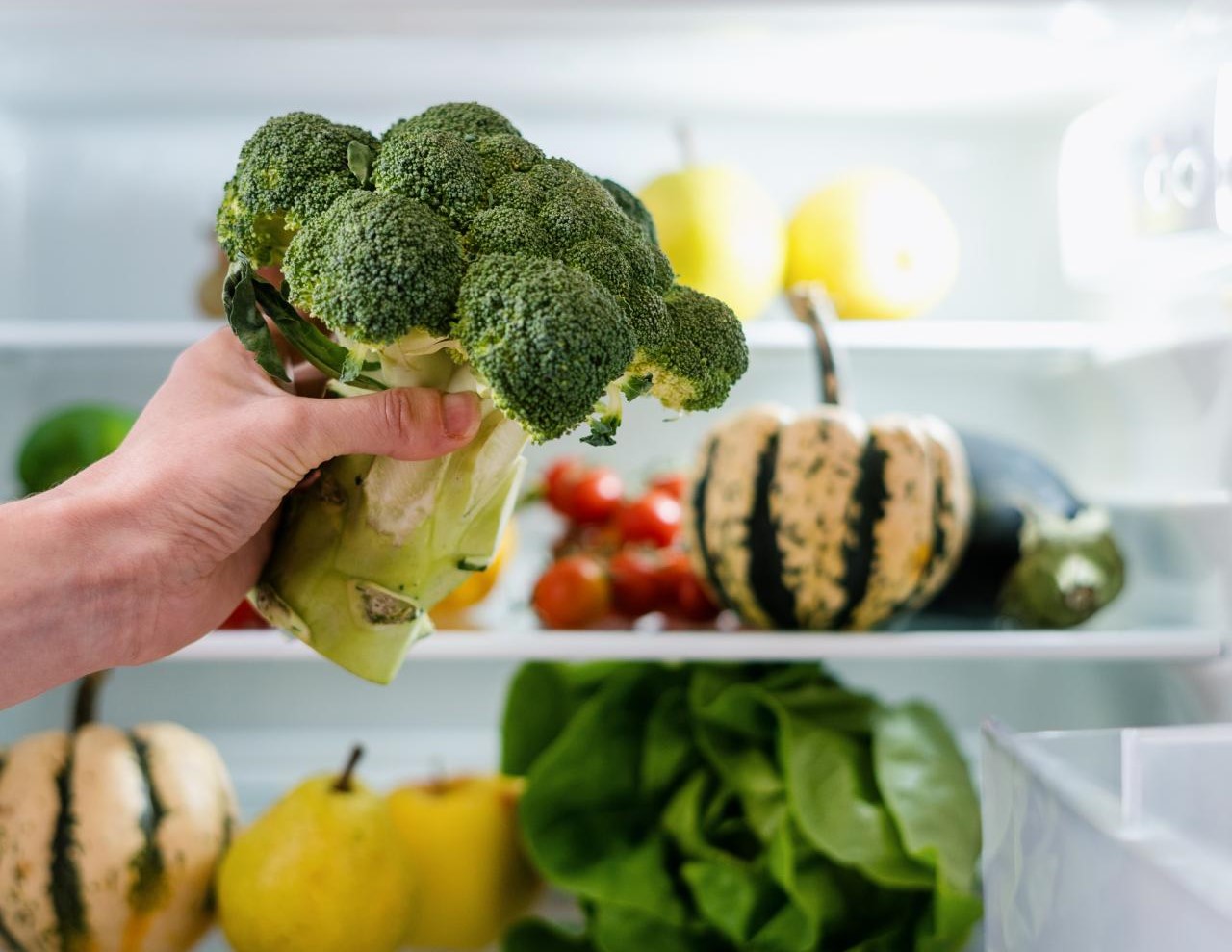
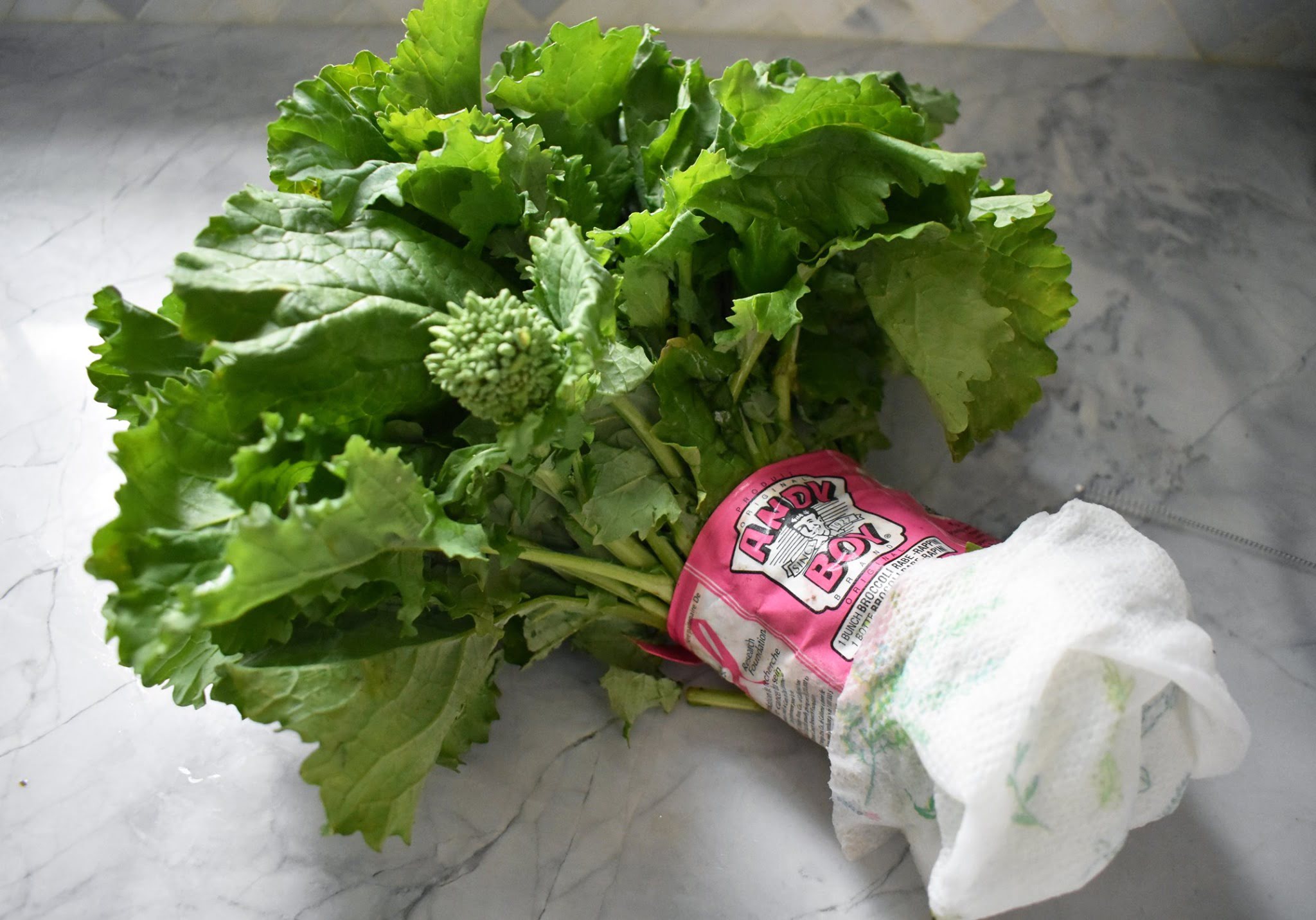



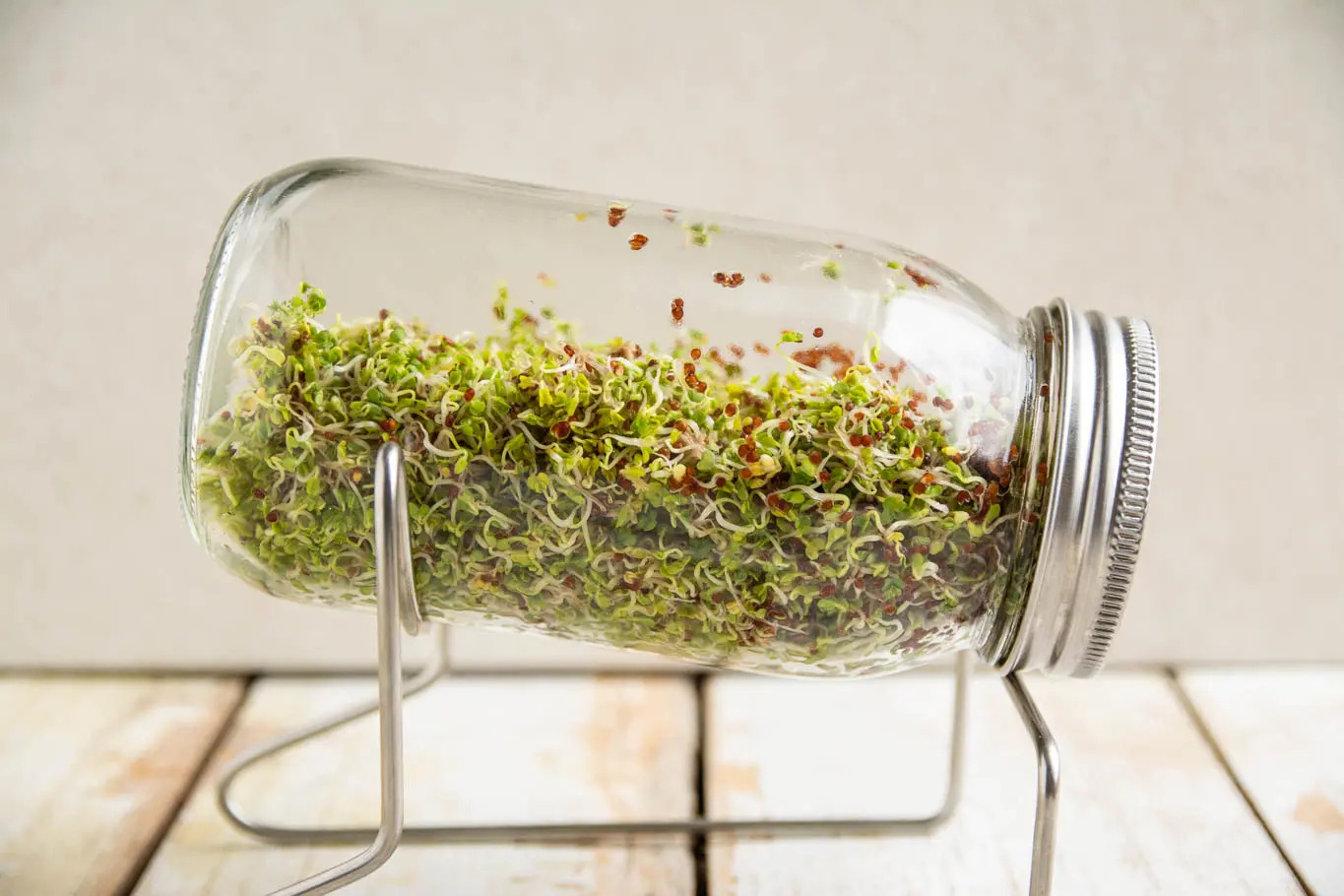

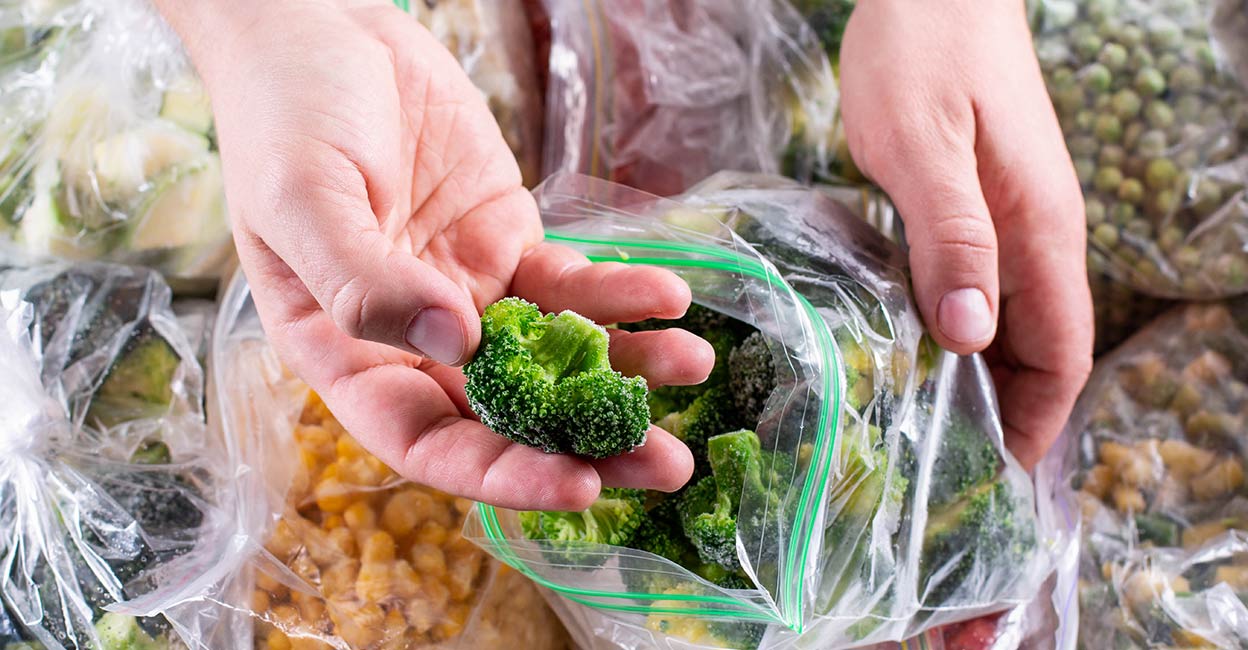
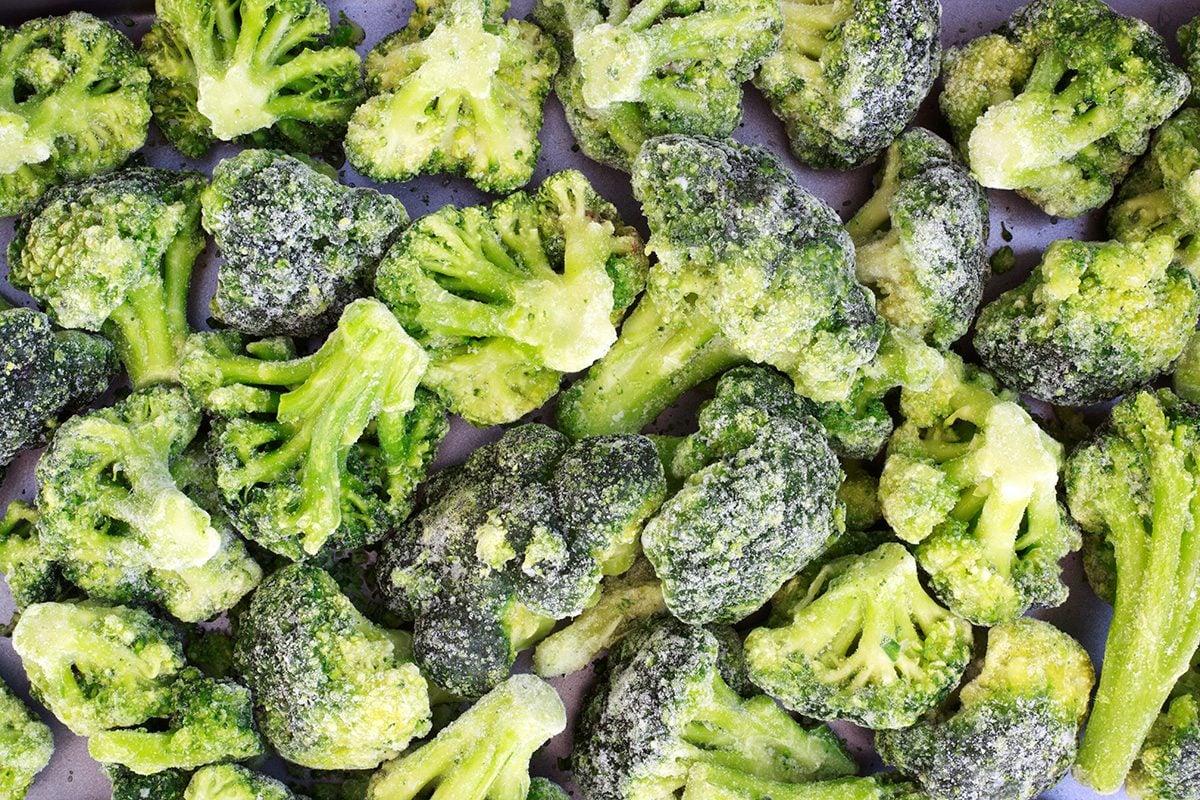

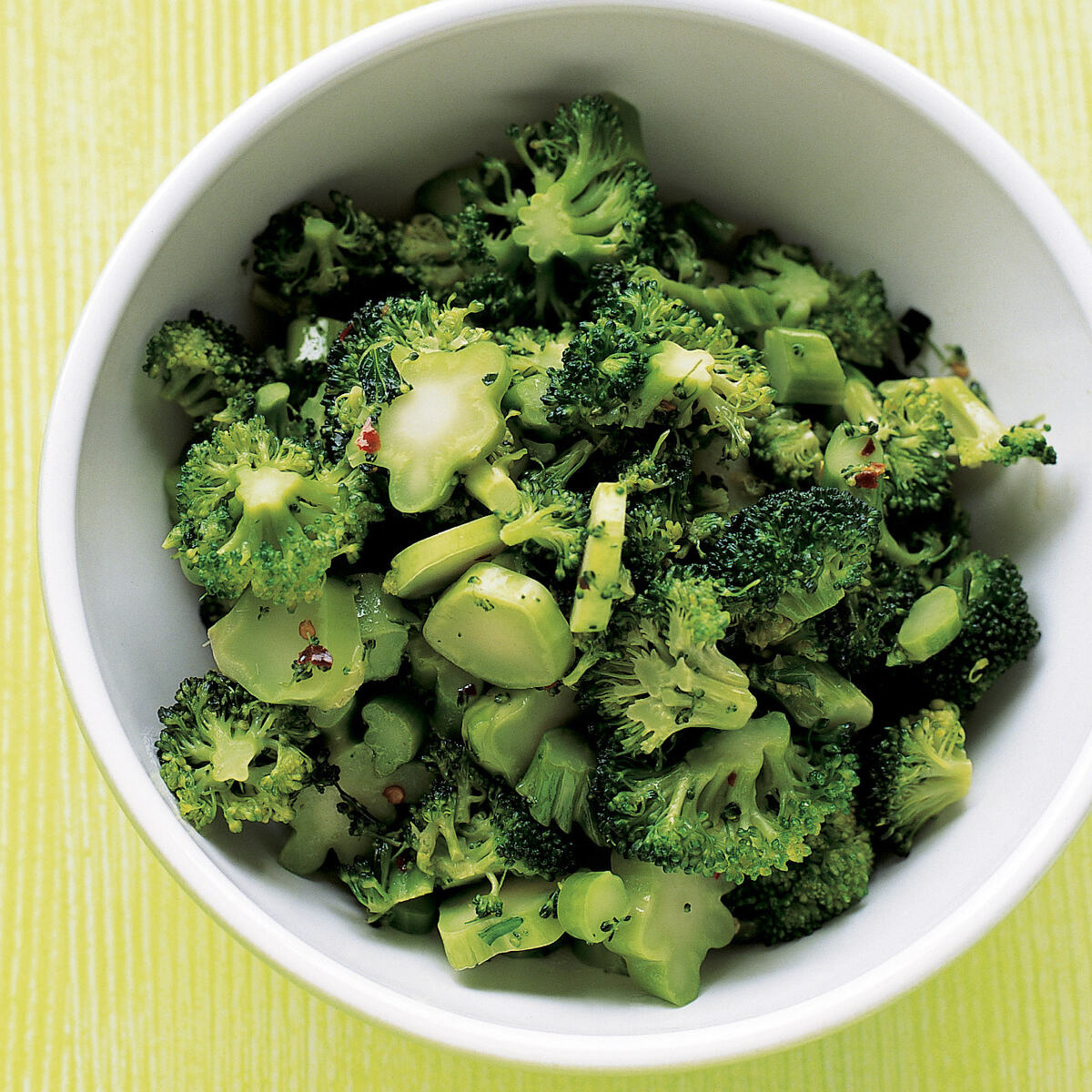

0 thoughts on “How To Store Fresh Broccoli”